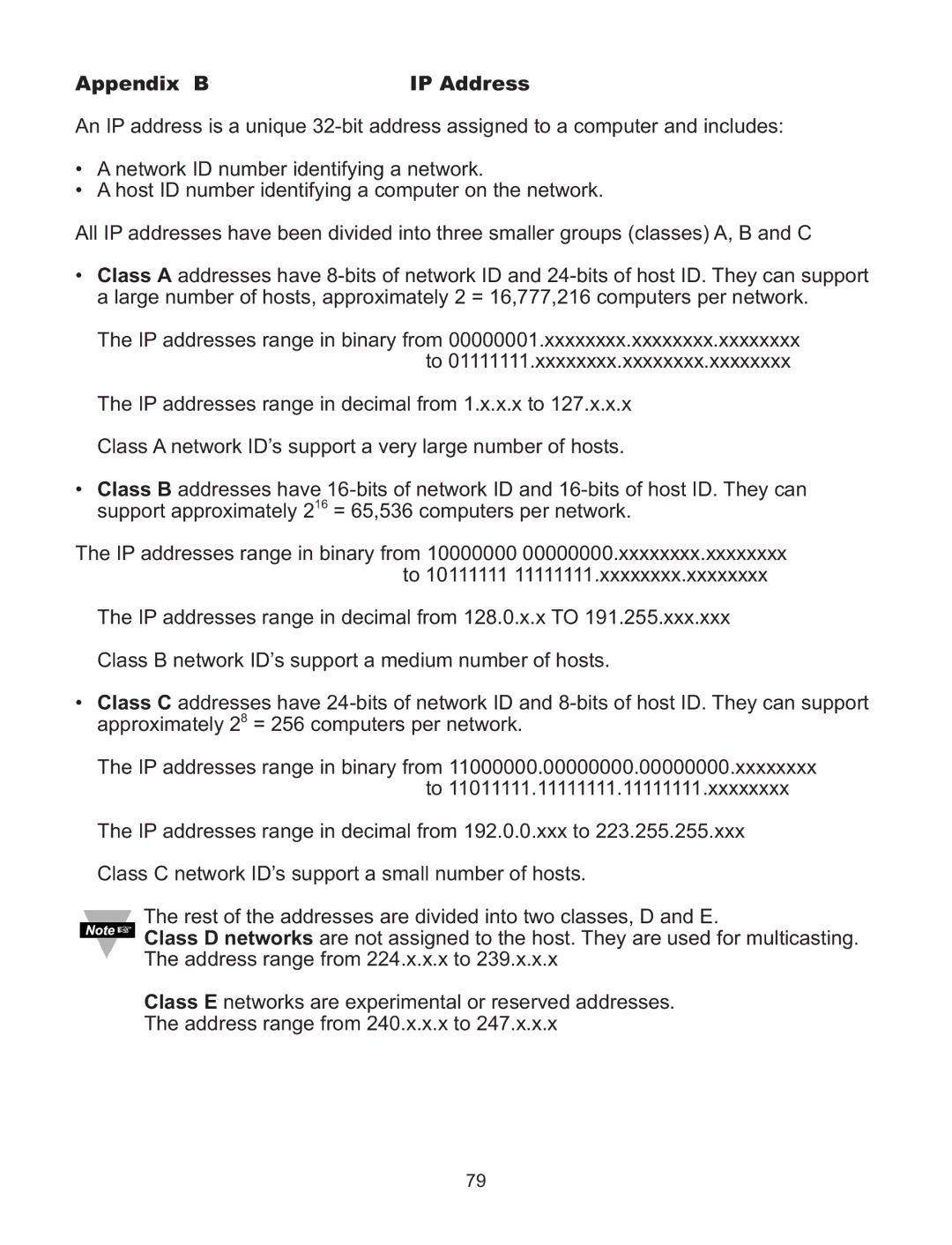Appendix BIP Address
An IP address is a unique
•A network ID number identifying a network.
•A host ID number identifying a computer on the network.
All IP addresses have been divided into three smaller groups (classes) A, B and C
•Class A addresses have
The IP addresses range in binary from 00000001.xxxxxxxx.xxxxxxxx.xxxxxxxx to 01111111.xxxxxxxx.xxxxxxxx.xxxxxxxx
The IP addresses range in decimal from 1.x.x.x to 127.x.x.x Class A network ID’s support a very large number of hosts.
•Class B addresses have
The IP addresses range in binary from 10000000 00000000.xxxxxxxx.xxxxxxxx to 10111111 11111111.xxxxxxxx.xxxxxxxx
The IP addresses range in decimal from 128.0.x.x TO 191.255.xxx.xxx Class B network ID’s support a medium number of hosts.
•Class C addresses have
The IP addresses range in binary from 11000000.00000000.00000000.xxxxxxxx to 11011111.11111111.11111111.xxxxxxxx
The IP addresses range in decimal from 192.0.0.xxx to 223.255.255.xxx Class C network ID’s support a small number of hosts.
The rest of the addresses are divided into two classes, D and E.
Class D networks are not assigned to the host. They are used for multicasting. The address range from 224.x.x.x to 239.x.x.x
Class E networks are experimental or reserved addresses. The address range from 240.x.x.x to 247.x.x.x
79
